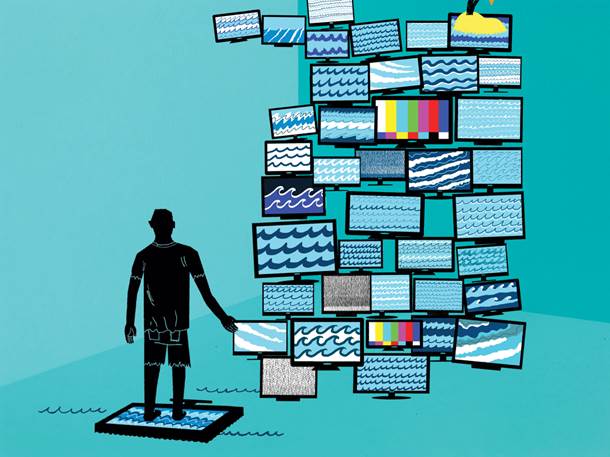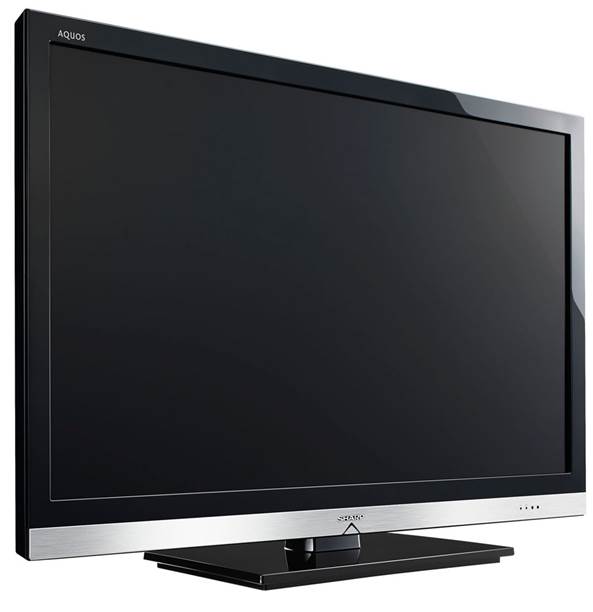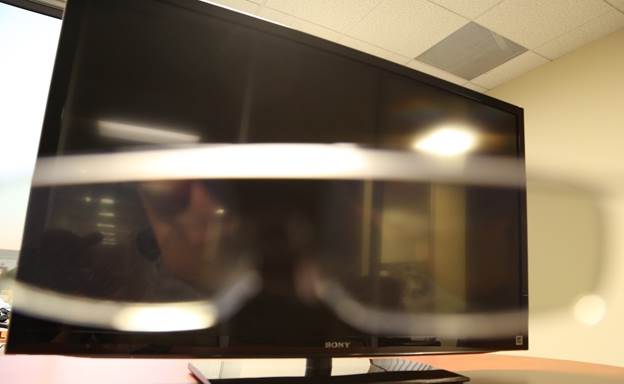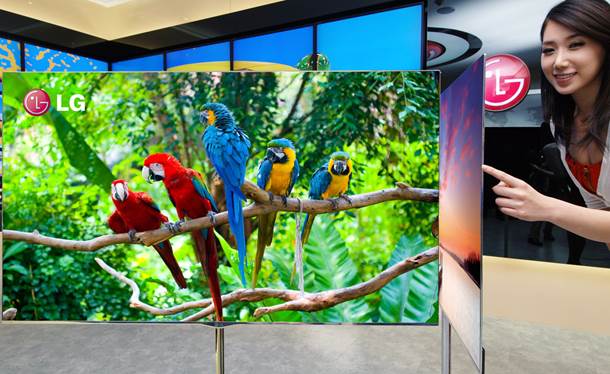Prices are usually lowest in February and
March, when manufacturers start shipping new models and retailers cut prices to
move old ones. We don’t expect to see compelling new features on mainstream
2013 sets, so don’t rule out a top-rated 2012. You might get one at a killer
price.

Now’s
a great time to buy
Sizing up TV performance
You have to look hard to find great sound.
It’s often middling at best.
If a TV can’t display satisfying picture
quality, it’s pretty much a dud, no matter what else it offers. Luckily, lots
of TVs can do just that. More than 100 of the models in our Ratings had very
good or excellent picture quality that should satisfy most viewers. Critical
viewers would probably be happiest with excellent picture quality that delivers
razor-sharp detail; vivid, accurate colors; and natural-looking images. There’s
not much reason to settle for a TV with a good or fair picture-reflecting some
problems with detail, color, contrast, or other critical attributes – when much
better sets sell for about the same price.

You
have to look hard to find great sound
You have to search harder to get great
sound. Many TVs have sound we judge good. That’s OK for most content, but it’s
unable to do full justice to movies or music videos. There’ not enough bass and
depth to add impact to soundtracks, and you might hear distortion when you pump
up the volume. In some cases, that could be a result of slim cabinets that
don’t have room for speakers with large drivers.
A number of TVs especially smaller ones,
had fair or poor sound, with such noticeable flaws that you might wince even
when listening to a talking head. The worst ones sounded alarmingly like AM
radio, as reader Roger Malson, of Grovelan, ill., found. “We bought a small TV
for our kitchen, and the sound is terrible, much tinnier and cheaper-sounding
than on the tube TV we had before, “he said.
If you’re connecting your TV to a sound bar
or other external speakers, its sound isn’t a major concern. Otherwise look for
a TV with at least a good sound score. For the most satisfying audio, opt for
one of the two dozen or so sets with very good sound.
3D is another area in which we see varying
performance. Many TVs do a very good job presenting convincing 3D, but some
still have viewing-angle limitations or struggle with ghosting, which refers to
double images you see even when wearing 3D glasses. TVs that use avtive-3D
technology present full 1080p resolution but tend to have a somewhat dim
picture in 3D. TVs that use passive-3D glasses usually have brighter 3D images,
but they don’t present full resolution, so you lose detail. Many viewers might
be OK with that because brighter images are easier on the eyes. There are
enough TVs in our Ratings with very good 3D performance to skip those with
lower scores.
TVs also vary in their features. Expect to
pay more for models that have all of the lasts features. If you don’t want the
extras, you can often save a bundle buying a more bare-bones set that provides
great performance. Two 60-inch plasma TVs from LG illustrate the point. The
60PM9700, which has 3D, Internet services with Wi-Fi, and a Web browser, sells
for $1,800. The 60PA6500, which has comparable scores but none of those
features, sells for $900.
“Bargains” can be risky.
A bargain price is always appealing, but
thinks twice about super-low-priced sets, especially from lesser-known brands.
Our experience is that the lowest-priced TVs aren’t always the best deals. Some
of the lowest-rated sets in the Ratings- with below-average scores for picture,
sound, or both-include TVs from Coby, Element, Haier, TCL, and Westinghouse.

The
lowest-priced TVs aren’t always the best deals.
Another point to consider with such brands
is how easy it will be to get the TV repaired. Major brands usually invest in
parts and service networks, so the likelihood that you’ll be able to get the TV
serviced by an authorized repair center is greater. Also, the manufacturer’s
warranty on some sets from less familiar grand might be shorter than the
average on-ear coverage for most sets. Coby and RCA have three-month labor
warranties.
Consider
a brand’s repair record.
In the event you’re thinking about buying a
TV we haven’t tested, you can glean some guidance from our brand histories,
which cover reliability and performance.
To gauge reliability, every year we ask
readers about their TVs. Our latest survey, which covers about 216,000 LCD and
plasma TVs purchased between 2008 and 2012, shows that most major brands had an
overall repair rate of only 4 percent during the first four years of use.
Fifteen of the 16 LCD brands covered in our
current survey had comparably low repair rates. Those brands, in alphabetical
order, are Dynex, Insignia, JVC, LG, Manavox, Panasonic, Philips, RCA, Samsung,
Sanyo, Sharp, Sony, Sylvania, Toshiba, and Vizio. Westinghouse was the most
repair-prone of the LCD brands covered. In the plasma category, Panasonic,
Samsung, and LG were generally reliable, with a low rate of repairs.
When TVs had problems, they often occurred
early – 57 percent of reported repairs were made in the first year of
ownership, a period usually covered by a standard manufacturer warranty. That
reinforces our advice that extended warranties aren’t a good investment for
most users.
Check
out performance.
Quality of TV performance has been more of
a mixed bag. A few brands stand out as solid choices based on our tests over
the past few years, but other makes have had higher-and lower-scoring sets.
LCD TVs form LG, Panasonic, Samsung, and
Sony have consistently been among the best performers in our Ratings. Plasma
TVs from Panasonic have been tops, followed closely by Samsung and LG. Given
their solid track record over a few years we believe other TVs from those brands
are likely to do as well-reassuring if you’re considering a TV we haven’t
tested.

LCD
TVs form LG, Panasonic, Samsung, and Sony have consistently been among the best
performers in our Ratings
Vizio, Sanyo, and Sharp LCDs have delivered
generally strong performance that should satisfy all but the most demanding
viewers, a track record that suggest other models will follow suit.
Other brands have had less consistent
performance. Some LCD TVs from Insignia, JVC, Philips, and Toshiba did quite
well, but others had lower scores. We have less confidence that an untested
model from those brands will match the performance of its best siblings.
Magnavox and Westinghouse LCDs have had lower over-all scores than most over
the past few years, but some new TVs have done better. With all of those
brands, your safest choice is a tested model from our Ratings.